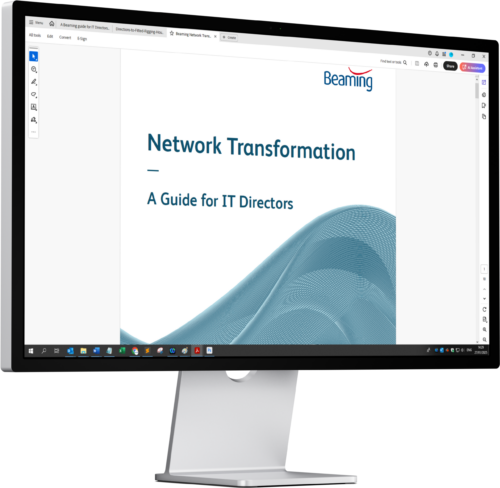Cyber Security Fail: Two-thirds of UK businesses vulnerable
Study suggests 3.6 million UK businesses are vulnerable to hackers as they fail to follow cybersecurity best practices, while one in ten has insufficient bandwidth for business needs.
More than two-thirds of UK businesses face an unnecessarily high risk of having their data, including commercially sensitive and personal information, intercepted by hackers because they are not following best practices for securing data on their networks, according to a report from Beaming, an internet service provider for businesses.
Beaming’s report, Network Transformation – A Guide for IT Directors, draws on a survey of UK businesses conducted by research consultancy Censuswide. It shows that 69 per cent of UK businesses, the equivalent of 3.6 million companies nationwide, have made their IT infrastructure and networks more vulnerable to attack by failing to encrypt data flowing over their networks, failing to isolate this traffic from the public internet infrastructure, and failing to monitor those networks for malicious activity.
These businesses are, for the most part, micro businesses employing fewer than ten people. However, Beaming’s research also suggests they include more than 7,000 medium-sized businesses and almost 1,000 large organisations, which are more likely to have multiple business locations and will be moving much larger volumes of commercially sensitive and personal information around.
More than half a million companies have insufficient bandwidth
Beaming’s report also reveals that another one in ten UK businesses face an unnecessarily high risk of lost productivity, customer service interruptions and vulnerability to cyber threats due to their reliance on internet connectivity that is unlikely to provide sufficient bandwidth for their needs.
Ten per cent of businesses surveyed admitted to Beaming’s researchers that they were using connectivity that is unlikely to deliver the speed and bandwidth they will need to keep pace with increasing data and communications traffic. This is the equivalent of 560,000 businesses across the UK and includes over 370,000 SMEs still using standard broadband services on the analogue telephone network.
Beaming’s research shows that demand for network capacity from UK businesses would be 30 per cent higher at the end of 2024 than at the start of last year due to the extra data and communications traffic from digital transformation efforts. The challenge of handling this traffic is greatest for businesses with over ten employees: leaders of large companies (250+ people) anticipated generating 95% more network traffic this year, on average, while SMEs with 10 – 250 people expected around 75% more traffic.
Unfit Networks: Insufficient Bandwidth & Security
| All | Solo (1 person) | Micro (2-10) | Small (10-49) | Medium (50-249) | Large (250+) | |
| PERFORMANCE | ||||||
| % UK businesses using connectivity unlikely to provide sufficient bandwidth for reliable operations in 2025 | 10% | 2% | 8% | 28% | 51% | 59% |
| # UK businesses using connectivity unlikely to provide sufficient bandwidth for reliable operations in 2025 | 564K | 92k | 327k | 121k | 19k | 5k |
| SECURITY | ||||||
| % UK businesses failing to follow best practices for securing their data while in motion | 69% | 83% | 32% | 6% | 5% | <1% |
| # UK businesses failing to follow best practices for securing their data while in motion | 3.8m | 3.4m | 370k | 13k | 2k | <100 |
Source: Beaming & Censuswide
Sonia Blizzard, Managing Director of Beaming, said: “With more and more business activity taking place outside of the traditional boundaries of the company HQ, the network that connects stakeholder groups wherever they may be is the key cornerstone of most organisations.
“Today’s corporate networks are far more than data pipelines; they’re essential assets that drive every aspect of business, enabling operations to function smoothly, securely, and efficiently. Our research suggests, however, that too many businesses still don’t recognise the importance of their networks and just how vulnerable they are to cyberattacks and traffic bottlenecks as their data flows between locations.”
